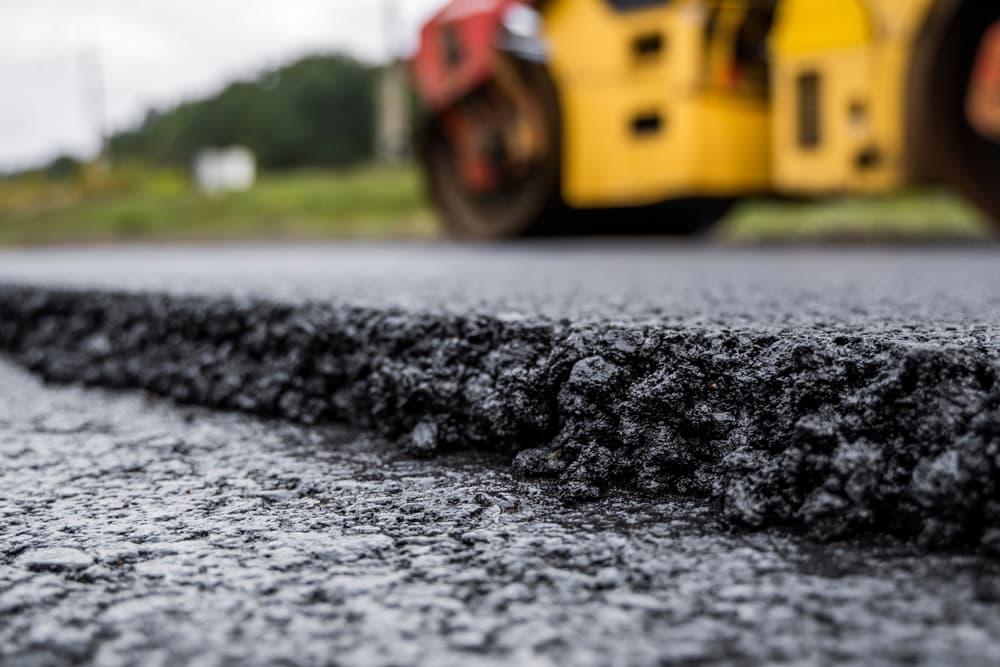Hot Mix Asphalt Paving: The Secret to Smooth, Angled Parking Lot Surface Areas
Hot Mix Asphalt Paving: The Secret to Smooth, Angled Parking Lot Surface Areas
Blog Article
Discovering the Ecological Advantages of Hot Mix Asphalt
The use of Warm Mix Asphalt in facilities projects offers an engaging situation for sustainable advancement and environmental stewardship. By delving into the elaborate information of its manufacturing processes and the cutting-edge usage of recycled materials, a much deeper understanding arises of exactly how this technology goes past simple surface area applications. The ecological benefits of Warm Mix Asphalt prolong much beyond initial impacts, offering a nuanced viewpoint on how this product can pave the means for a greener future.

Reduced Greenhouse Gas Emissions
The manufacturing procedure of Hot Mix Asphalt involves heating the combination of accumulation and asphalt binder to high temperature levels. By including redeemed asphalt pavement and recycled asphalt shingles right into the mix, the requirement for virgin materials is reduced, leading to energy savings and lowered discharges associated with removal and processing.
Studies have revealed that Hot Mix Asphalt pavements have a smaller sized carbon footprint over their life process contrasted to other pavement choices. The durability and recyclability of Warm Mix Asphalt further boost its environmental benefits by reducing the need for frequent upkeep or replacement, consequently preserving sources and decreasing discharges connected with restoration activities.
Power Effectiveness and Conservation
The production procedure of Warm Mix Asphalt not only lowers greenhouse gas discharges yet likewise adds substantially to energy performance and preservation initiatives. Energy effectiveness is a key advantage of Hot Mix Asphalt manufacturing compared to various other sidewalk types. The process entails heating up the materials at heats to create the asphalt mix, which needs much less power than alternative techniques. Furthermore, the ability to recycle and recycle asphalt pavement even more boosts power conservation. By integrating redeemed asphalt pavement (RAP) into new mixes, the market conserves power that would have been needed to create totally brand-new materials. The resilience of Hot Mix Asphalt lowers the regularity of upkeep and restoration, leading to long-lasting power savings. This durability reduces the energy-intensive procedures associated with regular repair work and replacements. Overall, Warm Mix Asphalt attracts attention as an ecologically pleasant alternative that focuses on power performance and preservation throughout its lifecycle.
Lasting Sidewalk Solutions

One trick facet of lasting sidewalk remedies is the use of recycled products such as recovered asphalt pavement (RAP) and recycled asphalt roof shingles (RAS) By integrating these materials into the asphalt mixes, the need for virgin sources is minimized, causing reduced energy usage and greenhouse gas emissions during manufacturing. In addition, the reuse of these products aids draw away waste from garbage dumps, adding to a more round and lasting economic climate.
Additionally, sustainable sidewalk remedies concentrate on enhancing pavement layout to boost efficiency and longevity. Techniques such as cozy mix asphalt (WMA) and stone mastic asphalt (SMA) improve the durability and strength of sidewalks, decreasing the need for constant repair services and replacements. By implementing these cutting-edge techniques, framework programmers can create pavements that not just fulfill high-performance requirements yet also minimize their ecological impact.
Minimized Environmental Effect
With an emphasis on sustainability and eco-conscious techniques, pavement options are created to lessen the environmental effect of building and upkeep procedures. Warm mix asphalt, specifically, uses several advantages that contribute to lowering the general ecological footprint of road framework. One crucial aspect is the recyclability of asphalt, which can be reused numerous times without jeopardizing its quality. This particular helps in preserving natural deposits and reducing the amount of waste sent out to landfills.
In addition, the manufacturing of warm mix asphalt discharges lower levels of greenhouse gases compared to other sidewalk products, making it a more eco pleasant option. The energy effectiveness of asphalt plants has likewise boosted for many years, leading to lowered fuel usage and lower discharges. Furthermore, the smooth surface area of hot mix asphalt lowers rolling resistance for automobiles, causing reduced gas intake and lowered air contamination from vehicle emissions.
Contribution to Climate Change Mitigation
Hot mix asphalt plays an essential function in mitigating climate change through its sustainable homes and decreased ecological effect. One considerable contribution to environment adjustment reduction originates from the power performance of warm mix asphalt manufacturing. Compared to other sidewalk alternatives, the manufacturing process for warm mix asphalt takes in less energy and produces reduced degrees of greenhouse gases, therefore decreasing its overall carbon impact.
Furthermore, warm mix asphalt's ability to mirror sunshine, called albedo, helps in lowering city heat island effects. By decreasing warm absorption and retention, hot mix asphalt sidewalks can reduce the demand for cooling in metropolitan areas, subsequently reducing greenhouse gas exhausts linked with energy intake for cooling down purposes.
Additionally, the longevity and recyclability of warm mix asphalt further boost its climate adjustment reduction abilities. Regrading. The long life expectancy of asphalt pavements minimizes the need for constant repair work or substitutes, ultimately decreasing the carbon discharges connected to road upkeep tasks. In addition, the recyclability of asphalt materials decreases the demand for virgin sources and lowers the ecological influence of pavement building and construction, aligning with sustainable methods for environment modification reduction.
Conclusion
Finally, the environmental advantages of Warm Mix Asphalt demonstrate its significant payment to reducing greenhouse gas emissions, preserving power, and minimizing environmental influence. This sustainable pavement remedy aligns with climate modification mitigation initiatives, advertises source preservation, and enhances facilities advancement. By using recycled products, energy-efficient manufacturing procedures, and durable design, Hot Mix Asphalt plays a crucial role in fostering a more eco-friendly method to facilities building.
The manufacturing procedure of Warm Mix Asphalt includes heating up the blend of accumulation and asphalt binder to high temperature levels. By integrating recovered asphalt pavement and recycled asphalt roof shingles into the mix, the requirement for virgin materials is reduced, leading to energy savings and lowered exhausts associated with extraction and handling.
One trick facet of lasting pavement solutions is the use of recycled products such as redeemed asphalt sidewalk (RAP) and recycled asphalt roof shingles (RAS) Techniques such as warm mix asphalt (WMA) and rock mastic asphalt (SMA) enhance the toughness and durability of pavements, commercial parking lot paving lowering the demand for constant repair work and replacements. Contrasted to various other pavement alternatives, the production procedure for warm mix asphalt consumes less power and discharges lower levels of greenhouse gases, hence lowering its total carbon footprint.
Report this page